If you’re wondering what people eat during Semana Santa in Guatemala, this guide will walk you through the most delicious and meaningful dishes of the season. I’ll be sharing the most traditional Guatemalan Semana Santa foods, the cultural stories behind them, and recipes you can try at home. From torrejas and bacalao to empanadas de manjar and garbanzos en miel, food plays a huge role in Guatemalan Holy Week—and for many of us who grew up here, it’s how we remember this time of year most vividly.
Walking through Antigua Guatemala during Semana Santa, the air is thick with the scent of corozo, incense, and sweet syrup. Vendors set up on every corner, scooping warm garbanzos en miel into little paper cups and pouring chilled chilacayote fresco into plastic bags with straws. You see cucuruchos in purple tunics grabbing a quick bite before returning to the procession. The smell of torrejas frying in bubbling syrup mixes with the earthy aroma of pan de yemas baking in nearby ovens. Kids weave through the crowd holding chupetes and corbatas while parents try to keep them from stepping on the alfombras.
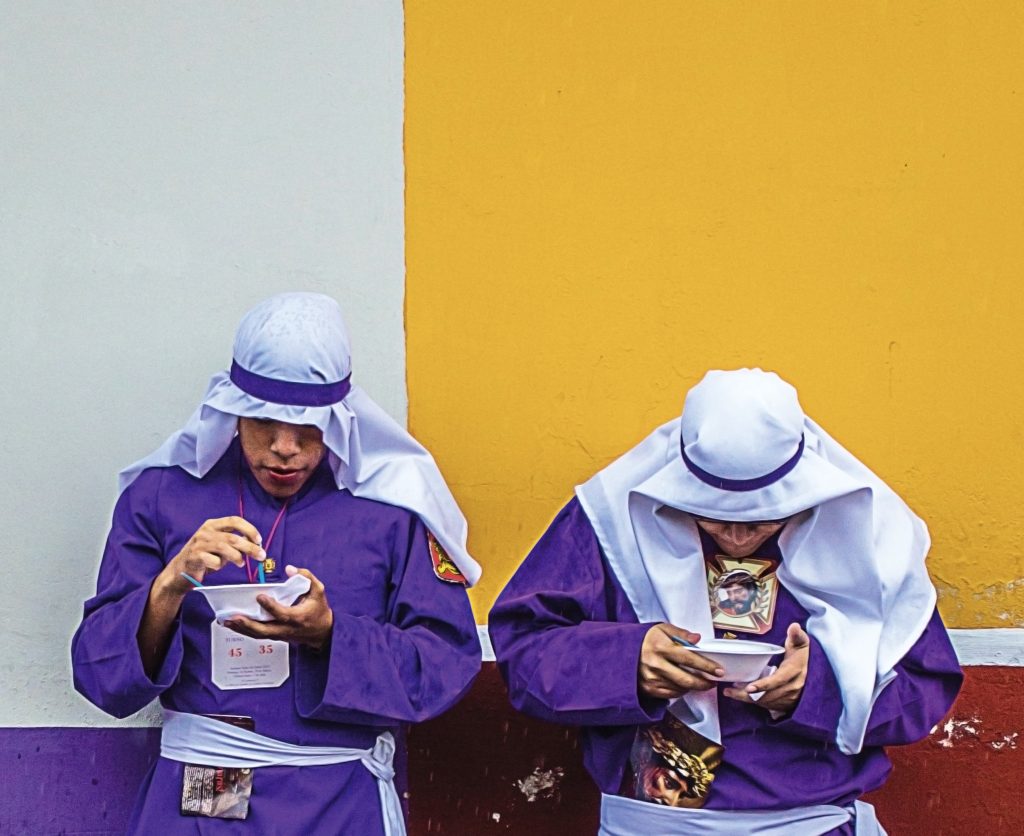
While many of the dishes you’ll read about here are rooted in centuries-old Guatemalan Easter traditions, I’ll also be sharing the fun foods you’ll find on the streets of Antigua today—like granizadas, algodones (cotton candy), helados de carreta, chupetes and other local favorites. These might not be historical, but they’re part of the Semana Santa food experience in Antigua, especially if you’re traveling with kids (or just love sweets like I do).
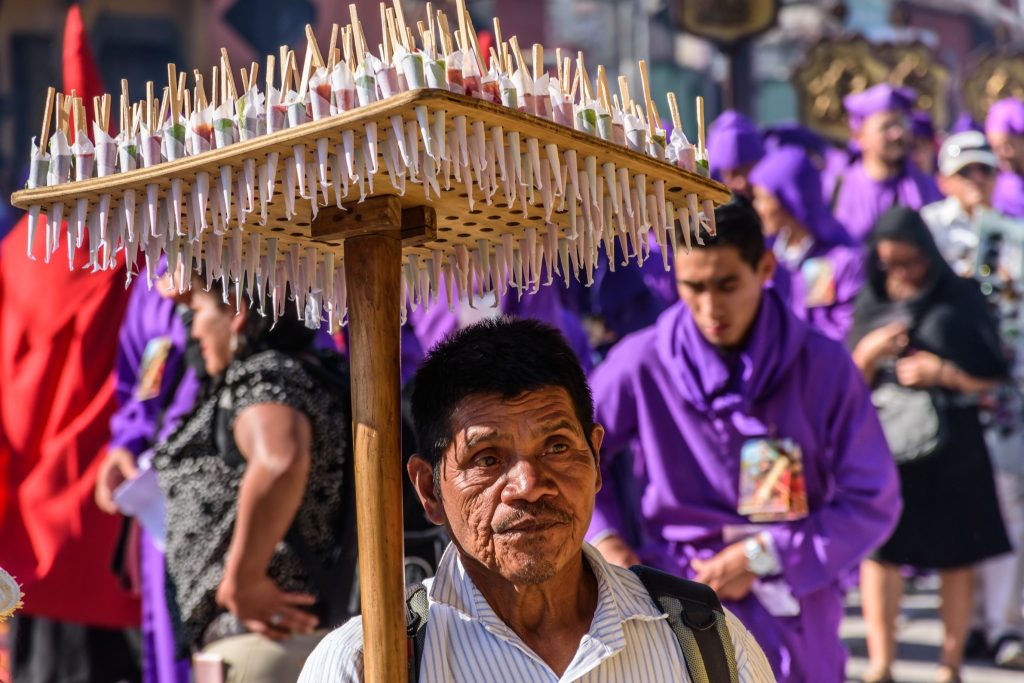
Lucy Brown | Dreamstime.com
What Makes Semana Santa Food in Guatemala So Unique?
What makes traditional Guatemalan Semana Santa foods so special isn’t just the taste—it’s the meaning behind them. These dishes aren’t eaten every day, and many of them only appear once a year, during Lent and Holy Week. They mark a time of reflection, community, and faith. Recipes are passed down from grandparents, shared with neighbors, and made in huge batches for visiting family or guests after a long procession.
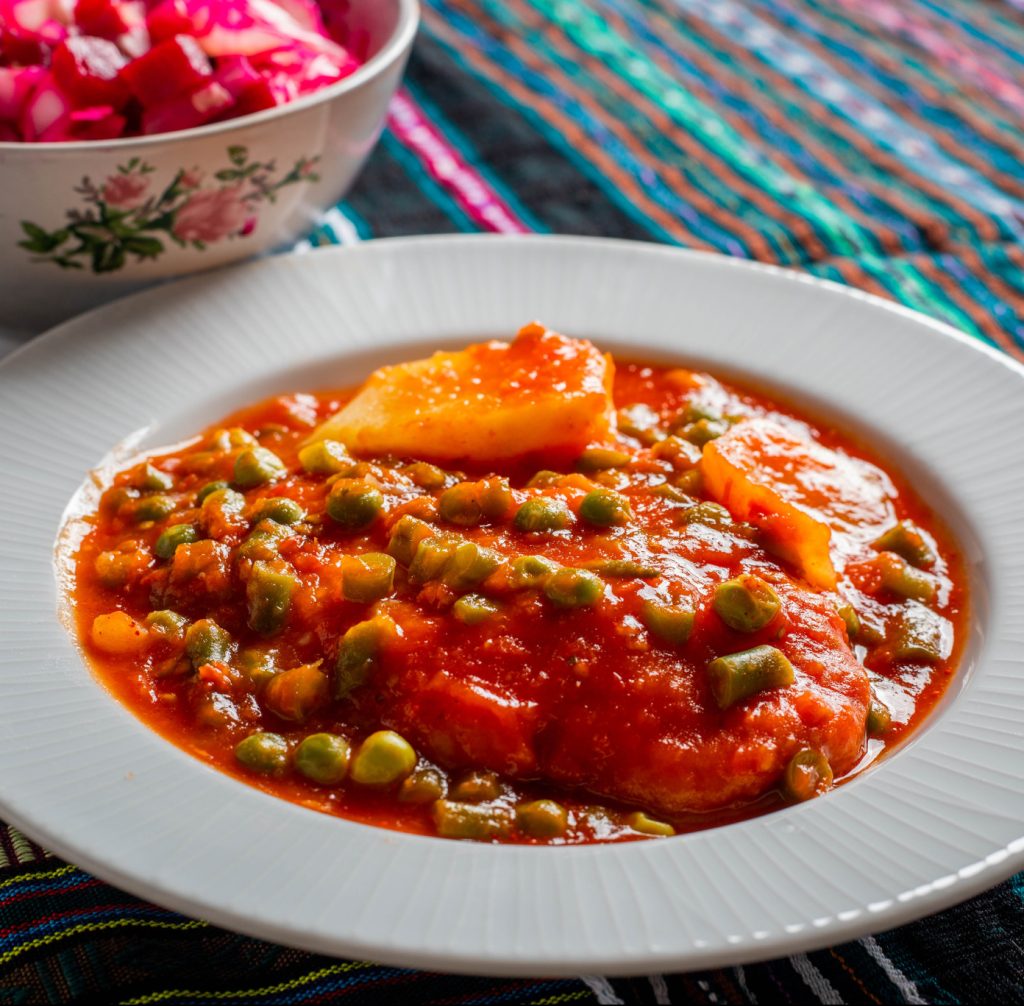
Because Semana Santa falls during Cuaresma (Lent), when many Catholics avoid red meat, meals focus on vegetables, legumes, fish, and sweet treats. Some dishes—like bacalao a la vizcaína—came from Spain and were adapted using Guatemalan ingredients. Others, like tamalitos de elote, have deep Indigenous roots. What ties them all together is the care and tradition that goes into making them.
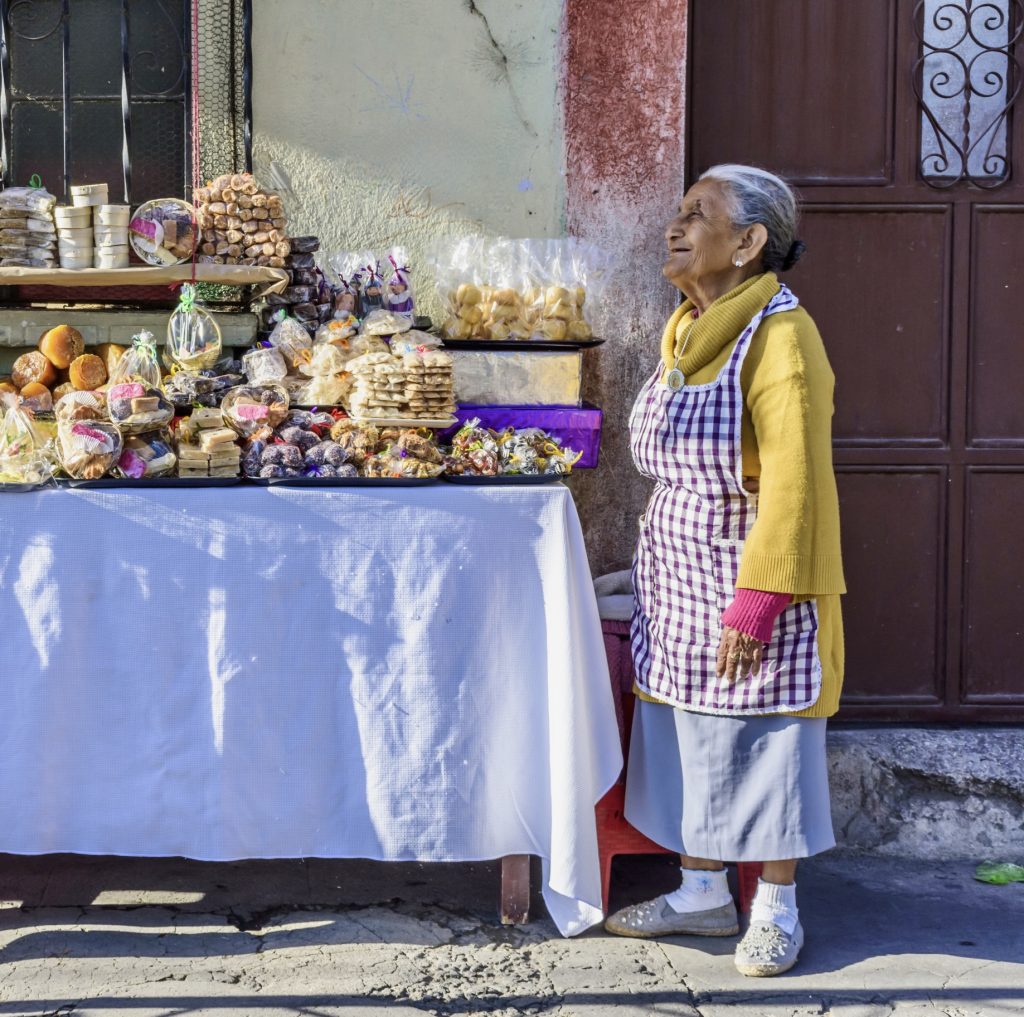
Lucy Brown | Dreamstime.com
You’ll also notice that food is a big part of the street culture during Holy Week. Vendors don’t just sell snacks and traditional candy, they help keep people going through long days of walking, waiting, and devotion. Families often wake up before sunrise to start cooking, and food is as much a part of the celebration as the processions themselves. It’s a moment when faith, family, and food all come together—and that’s what makes it unforgettable.
The Most Popular Guatemalan Holy Week Foods
Bacalao a la Vizcaína (Salted Cod Stew) o Pescado Seco
This rich, tomato-based cod stew is a staple of Guatemalan Holy Week meals, especially on Good Friday when many people avoid red meat. Made with dried and salted cod (pescado second), onions, peppers, tomatoes, olives, and capers, bacalao a la vizcaína is deeply savory and full of comforting flavors. It’s a dish that blends Spanish tradition with Guatemalan flair, and many families have their own twist on it—some add potatoes or carrots, others keep it simple and classic.
Want to bring this savory Easter classic to your table? Here’s my family’s bacalao a la Vizcaína here.
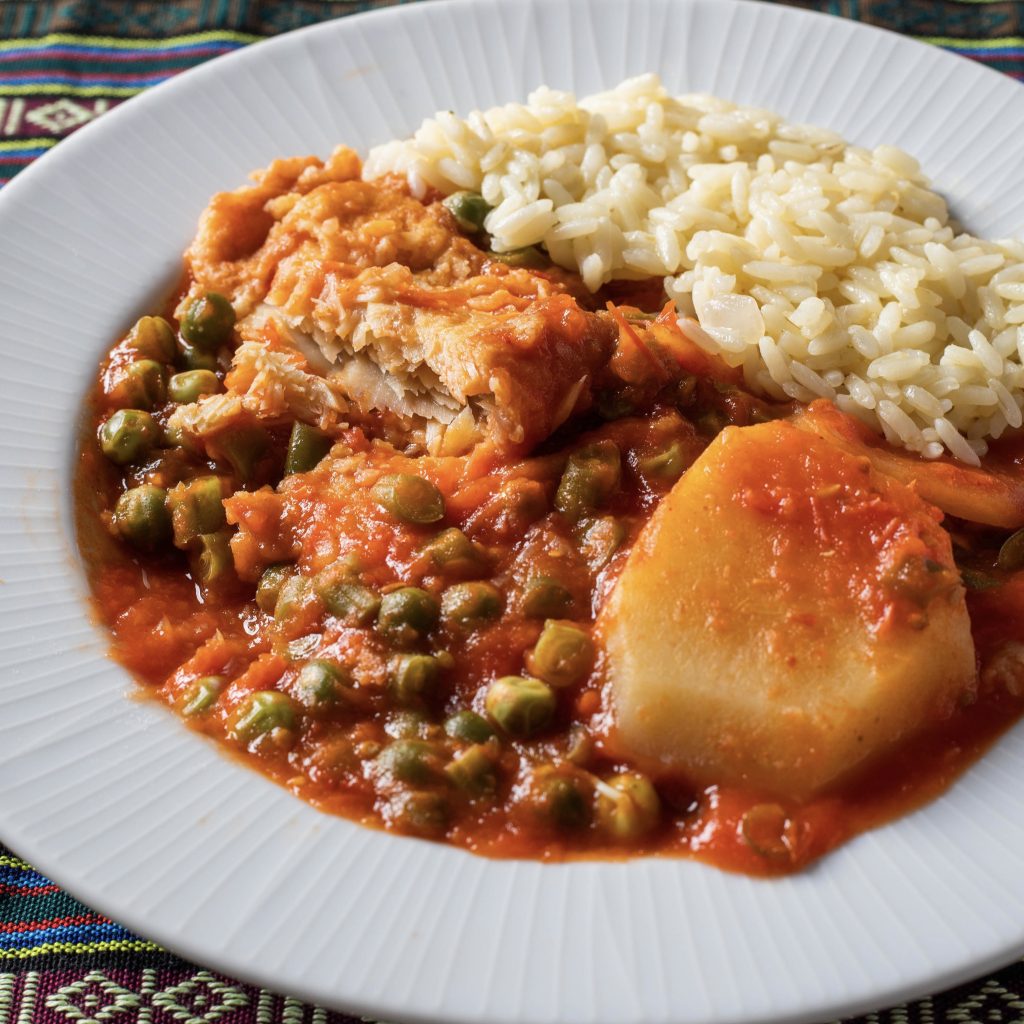
Torrejas (Guatemalan-Style French Toast in Syrup)
Torrejas are one of the most beloved traditional Guatemalan Semana Santa foods, and you’ll smell them before you see them. Made with slices of bread soaked in egg, lightly fried, and then bathed in a warm syrup of cinnamon, cloves, and panela, they’re the sweet heart of many Holy Week meals. You’ll find them in homes, bakeries, and food stalls all over Antigua during Semana Santa. They’re especially popular after a long procession, when something warm and sweet hits just right.
Curious how to make this syrupy favorite? Get the full torrejas recipe here and try them for yourself.
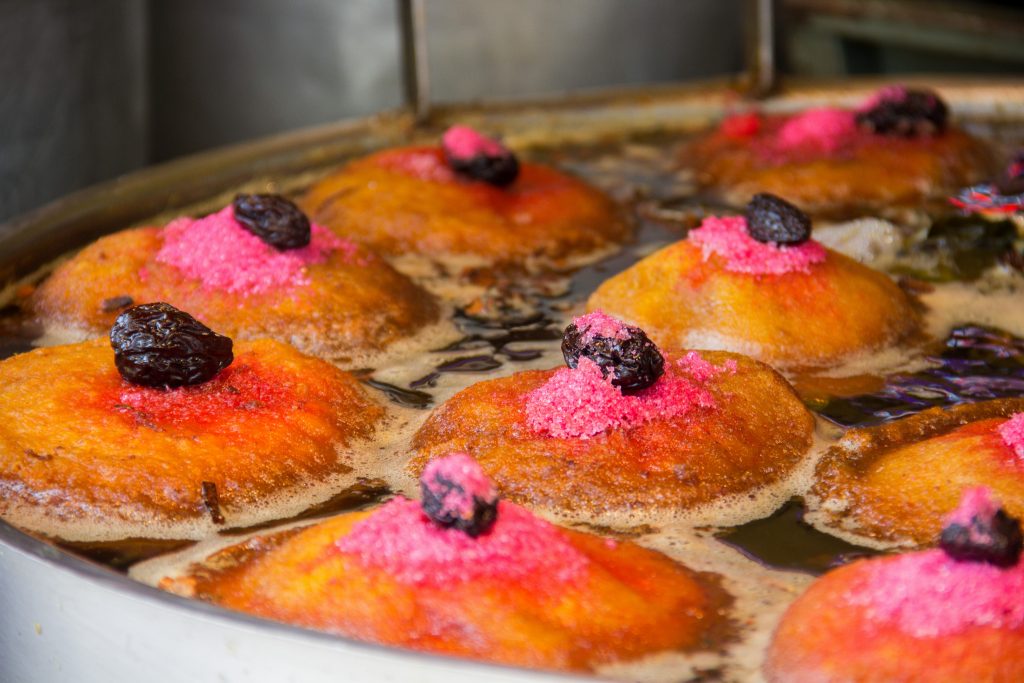
Garbanzos en Miel (Sweet Chickpeas in Spiced Syrup)
This might sound unusual if you haven’t grown up with it, but garbanzos en miel are a true Guatemalan Easter tradition. Tender chickpeas are simmered in a sweet syrup made from panela (unrefined cane sugar), cinnamon, cloves, and sometimes a touch of orange peel. The result is a warm, comforting dessert that’s not too heavy—perfect for Lent. You’ll often see street vendors serving small cups of these during processions, especially in Antigua.
Check out my Guatemalan garbanzos en miel recipe and give it a try this Holy Week.

Empanadas de Manjar (Custard-Filled Turnovers)
Empanadas de manjar are a must during Semana Santa in Guatemala, and they’re unlike any other empanadas I’ve ever had. What makes them so unique is the dough: it’s made from a mix of wheat flour and salpor (corn flour), giving the outer crust a slightly crumbly, almost melt-in-your-mouth texture. The reddish tint comes from annatto (achiote), which not only adds color but a hint of earthiness. Inside, they’re filled with manjar de leche, a smooth milk custard flavored with cinnamon and vanilla.

You’ll find these custard-filled treats everywhere in Antigua during Holy Week—at processions, church vigils, or sold in little baskets by street vendors. They’re especially popular with kids and anyone craving something sweet after a long day following the andas.
Want to try this one-of-a-kind Guatemalan empanada? Here’s the full empanadas de manjar recipe to bake them at home.
Tamalitos de Elote (Sweet Corn Tamales)
Soft, slightly sweet, and full of fresh corn flavor, tamalitos de elote are one of the most comforting traditional Guatemalan Semana Santa foods. Made from blended corn kernels, sugar, and a bit of cinnamon, these tamales are steamed in corn husks until tender. The texture is somewhere between a cake and a pudding—moist and slightly crumbly—and they’re perfect as a snack, dessert, or even breakfast during Holy Week.
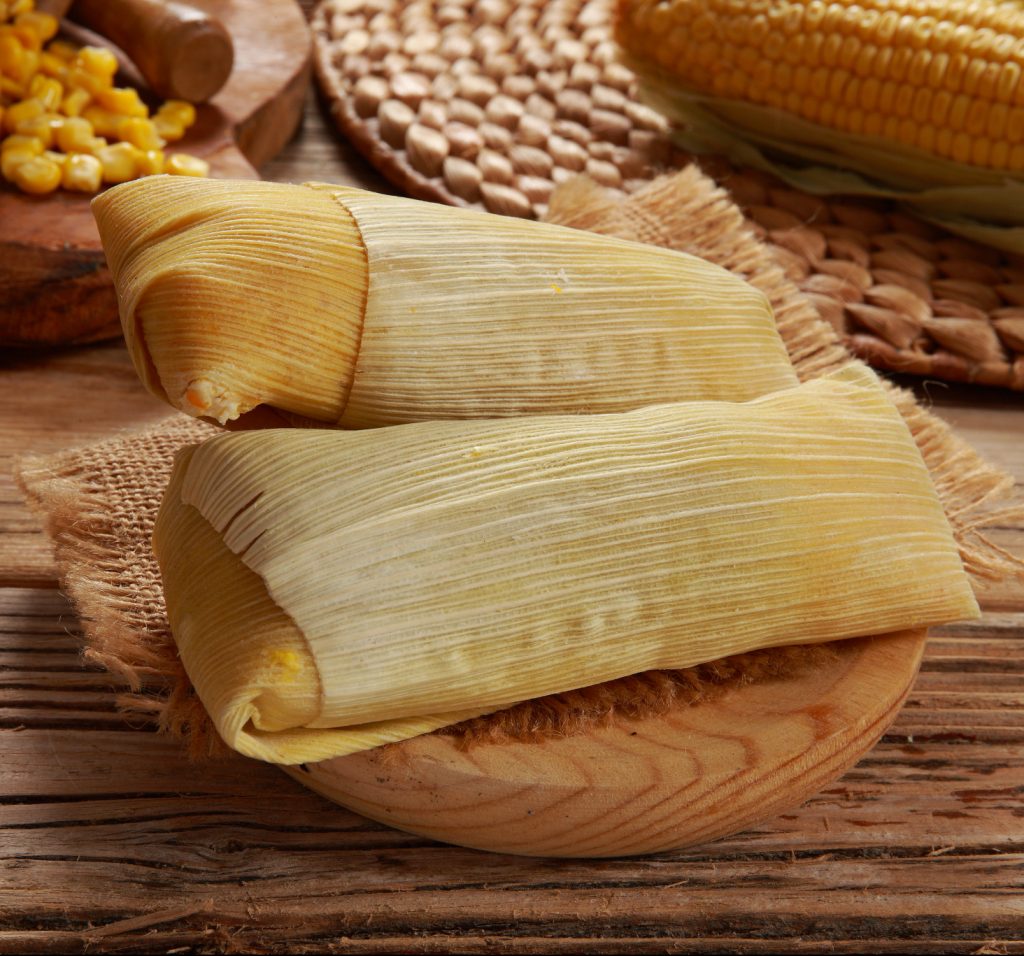
You’ll often see families making them in big batches to serve with coffee during Lent, or selling them from baskets at vigils and processions in Antigua. Get my tamalitos de elote recipe here.
Other Guatemalan Semana Santa Foods During Holy Week
While the bigger dishes get most of the spotlight, there are so many other foods and drinks that are part of the traditional Guatemalan Semana Santa experience—especially in Antigua. Some are made at home, others are sold by street vendors, but all of them are tied to the flavors and feelings of Holy Week. Here are a few more seasonal favorites you might come across:
Manzanillas en Dulce
These tiny crab apples are stewed in a spiced syrup and served cold. Slightly tart, slightly sweet, and incredibly refreshing, they’re a lesser-known but much-loved Holy Week treat. Get the recipe for manzanillas en dulce here.
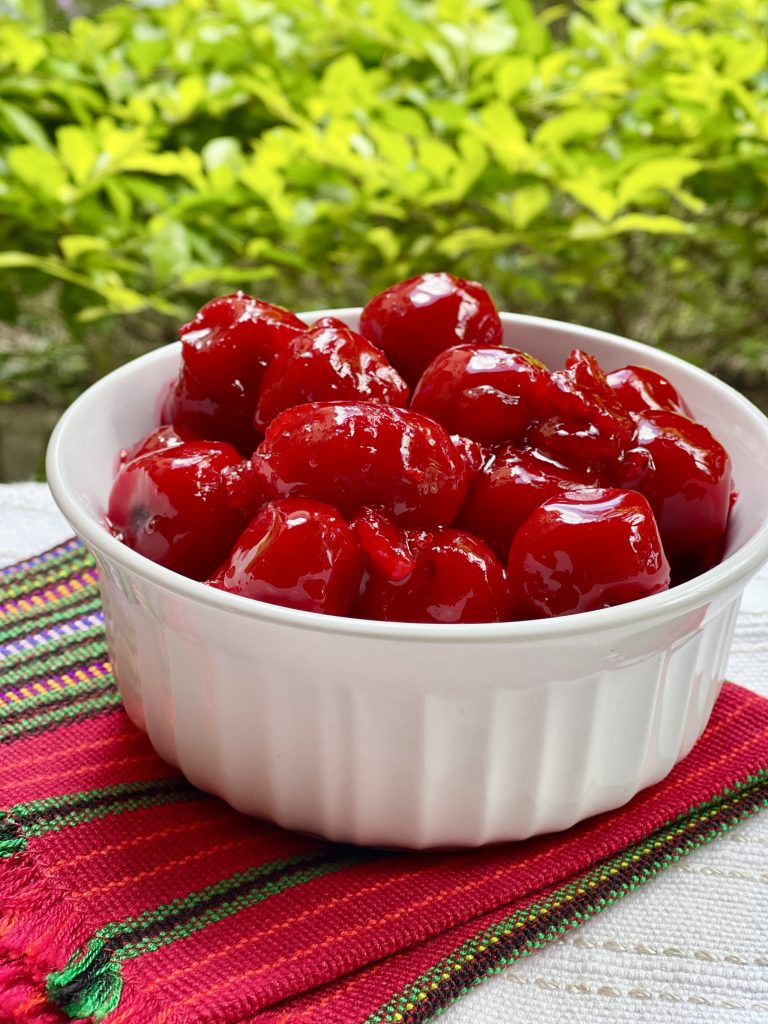
Pan de Yemas
A soft, lightly sweet egg yolk bread that’s often baked in large batches and shared with family and friends. It’s simple but rich, with a golden color and dense, satisfying texture. You’ll often smell it baking as you walk by neighborhood panaderías during Lent. And if you are looking for something a little sweeter, my article about Guatemalan breads here gives you a full guide to Guatemala’s pan dulce (sweet breads).
Molletes Stuffed with Garbanzos en Miel
This unique twist on two Guatemalan favorites combines soft, sweet bread rolls—molletes—with a warm filling of garbanzos en miel (chickpeas in spiced syrup). The result is a rich, comforting dessert that’s not too sweet, and surprisingly satisfying. You’ll sometimes find this fusion version served during Semana Santa in Antigua Guatemala, especially at family gatherings or shared meals after processions. Check out the recipe for molletes stuffed with garbanzos en miel.
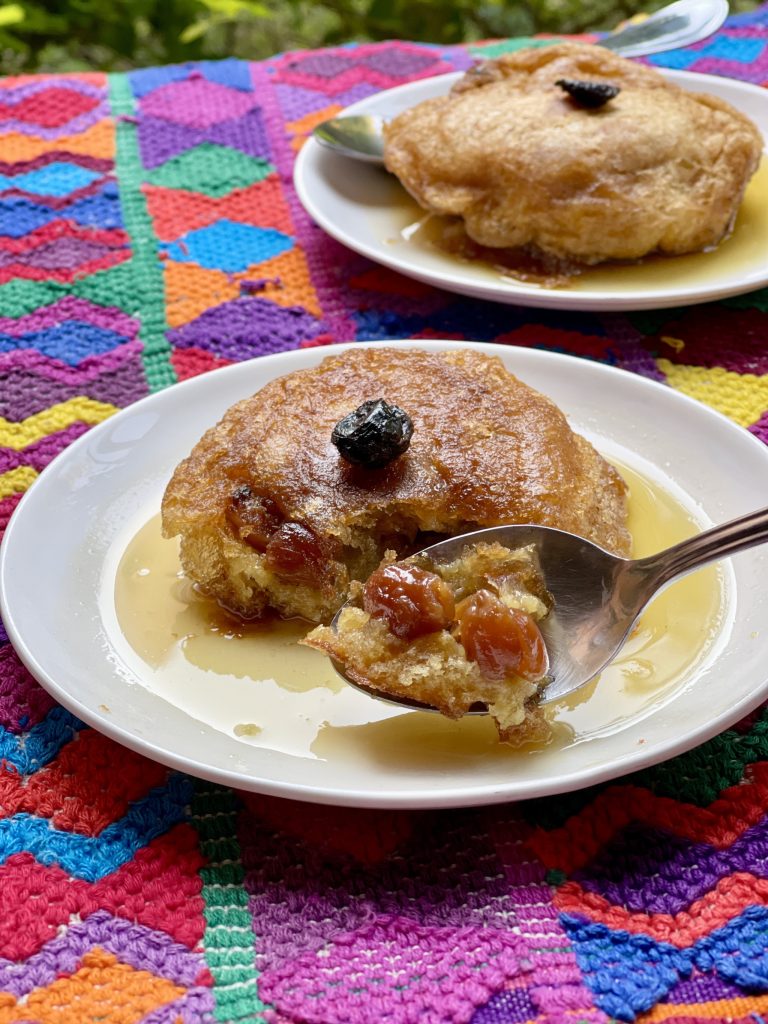
Buñuelos
Deep-fried dough balls served in syrup made from panela, cinnamon, and anise. Crispy on the outside and soft inside, they’re a favorite at ferias and during religious festivals, including Semana Santa. Get the recipe for Guatemalan buñuelos here.
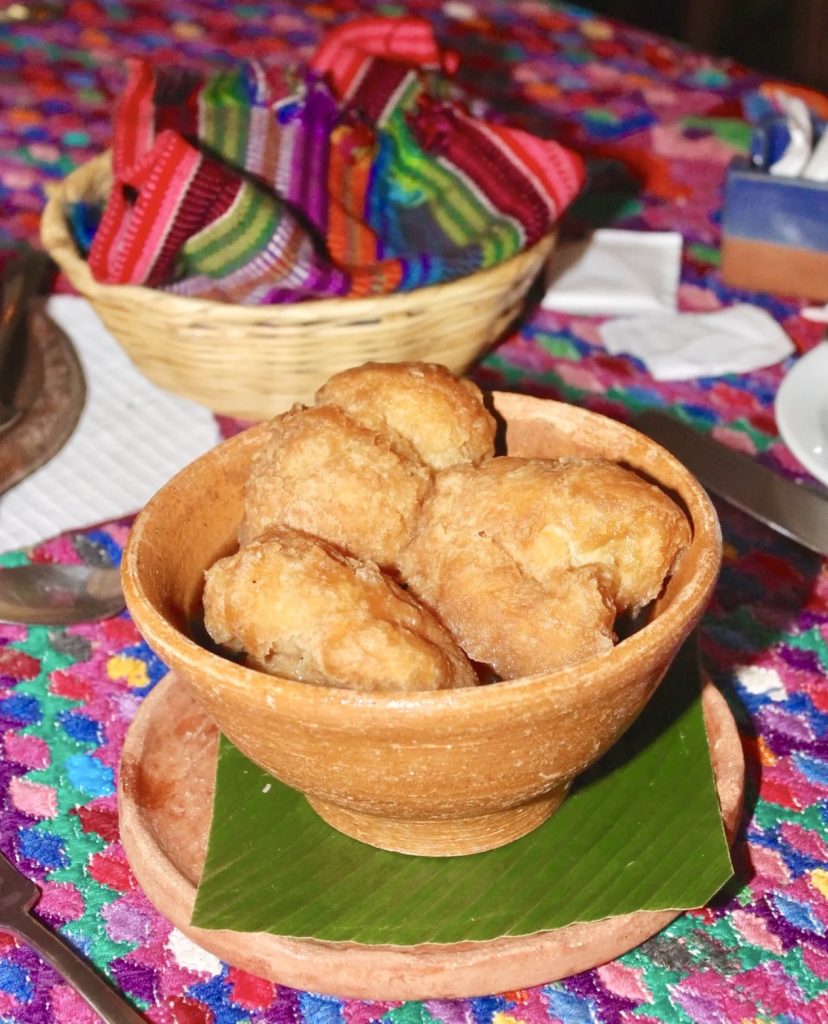
Jocotes en Miel
Small, tart red fruits slowly cooked in a sweet syrup of panela, cinnamon, and cloves. The jocotes softens and soak up the syrup, making this one of the most nostalgic Semana Santa desserts in Guatemala. Get the recipe for jocotes en miel here.

Chuchitos
Similar to tamales but smaller and firmer, chuchitos are made with corn dough and usually filled with tomato sauce and shredded meat. While they’re not exclusive to Holy Week, they’re popular street food and make an easy, hearty snack during processions. Get the tamalitos de elote recipe here.
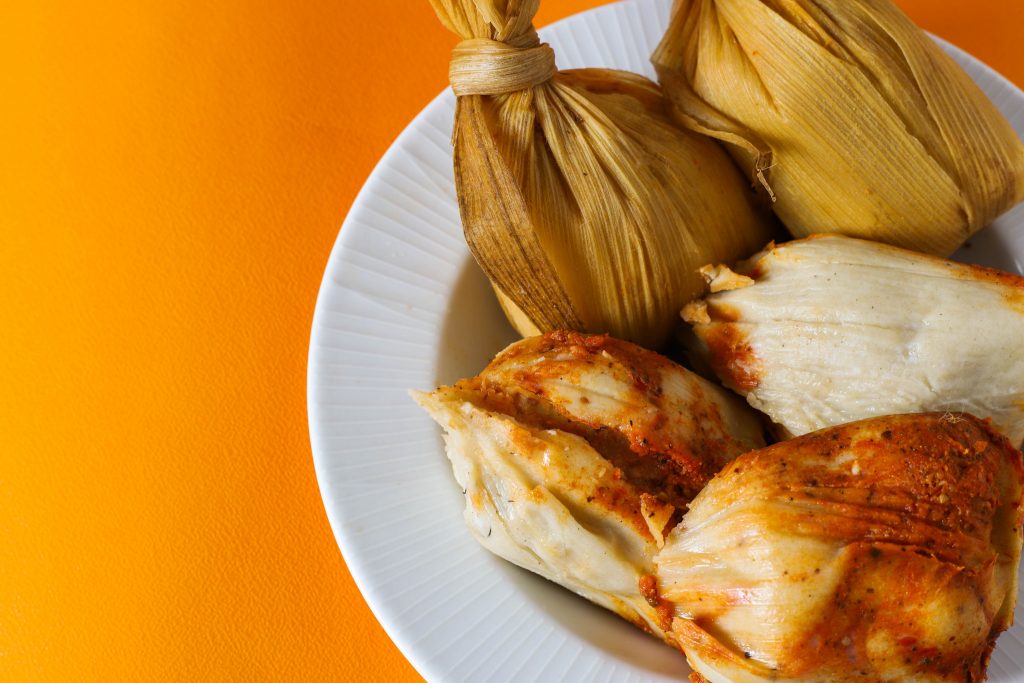
Don’t skip the traditional Guatemalan candies, either! During Semana Santa, many sweet shops and market stands are stocked with some of my all time favorites like canillitas de leche, cocadas, colochos de guayava and of coarse barras de maní. These make lovely gifts or just a sweet treat while you take a break from the crowds.
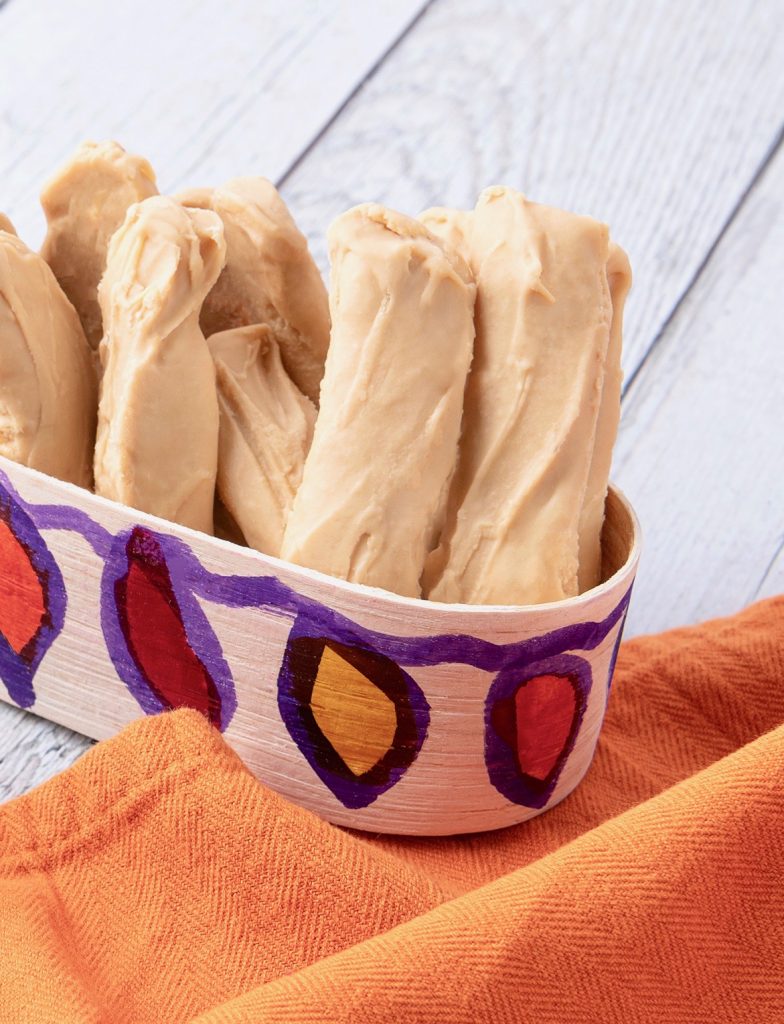
For more sweet Guatemalan treats check out my article on traditional on traditional Guatemala candy (with recipes) traditional Guatemalan candy (with recipes) here.
Modern Treats You’ll Find in Antigua During Semana Santa
While many foods tied to Semana Santa in Guatemala have deep cultural roots, the streets of Antigua during Holy Week also offer a feast of colorful, fun snacks that reflect how celebrations have evolved. This isn’t just about tradition—it’s about joy, flavor, and the energy that fills every street corner.
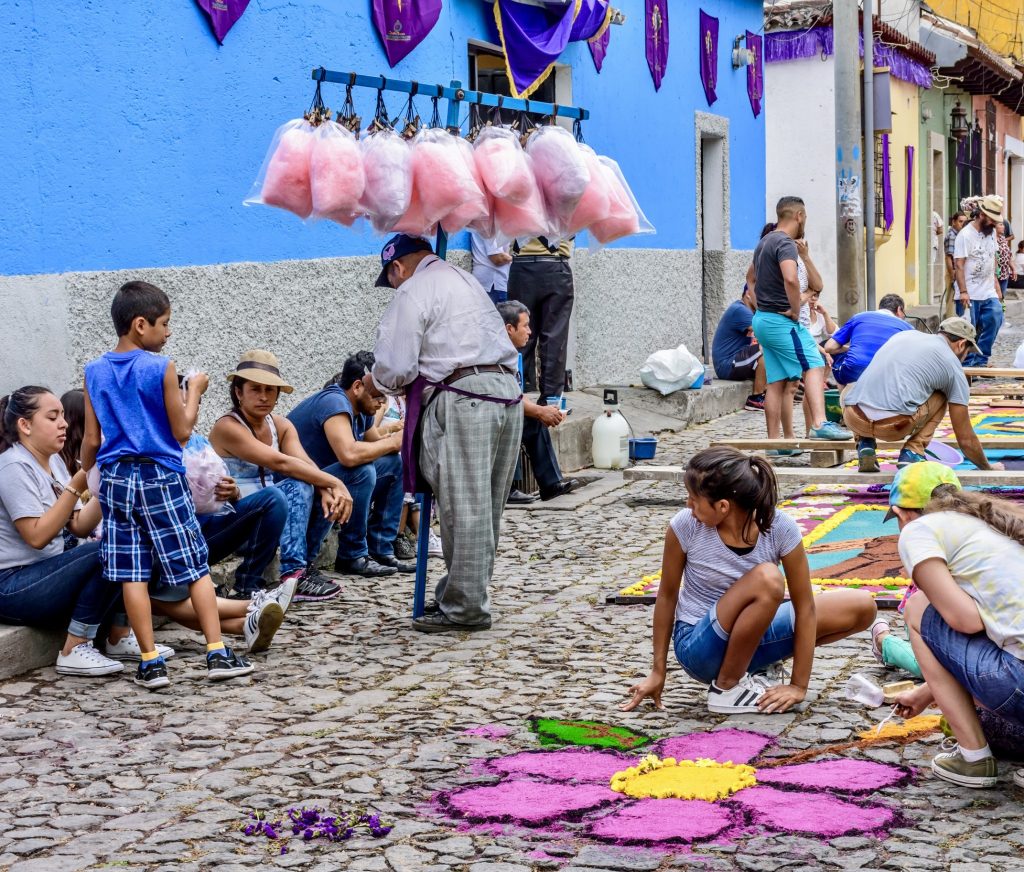
It’s common to see families sitting on sidewalks, kids helping decorate alfombras, and vendors selling everything from cotton candy in plastic bags and colorful chupetes to sweet fried corbatas. The smell of incense, corozo, and cinnamon wafts through the air, mixing with the scent of freshly made snacks. You’ll hear the buzz of the crowds and the scrape of granizada carts—Semana Santa is a full-on sensory experience.
Here are some of the modern treats you’ll find while walking through Antigua:
- Algodones (Cotton Candy) – Pastel-colored sugar spun into fluffy clouds and sold in see-through plastic bags, hanging like decorations on vendor racks along the procession route.
- Granizadas – Shaved ice drizzled with syrup (think tamarind, cherry, or blue raspberry), sometimes topped with condensed milk or even chopped fruit. It’s cold, sweet, and the perfect relief after a hot afternoon following processions.
- Helados de Carreta – Those old-fashioned pushcarts still roam Antigua’s cobblestone streets, offering homemade ice cream scooped into small paper cups. The mango and coconut flavors are my favorites.
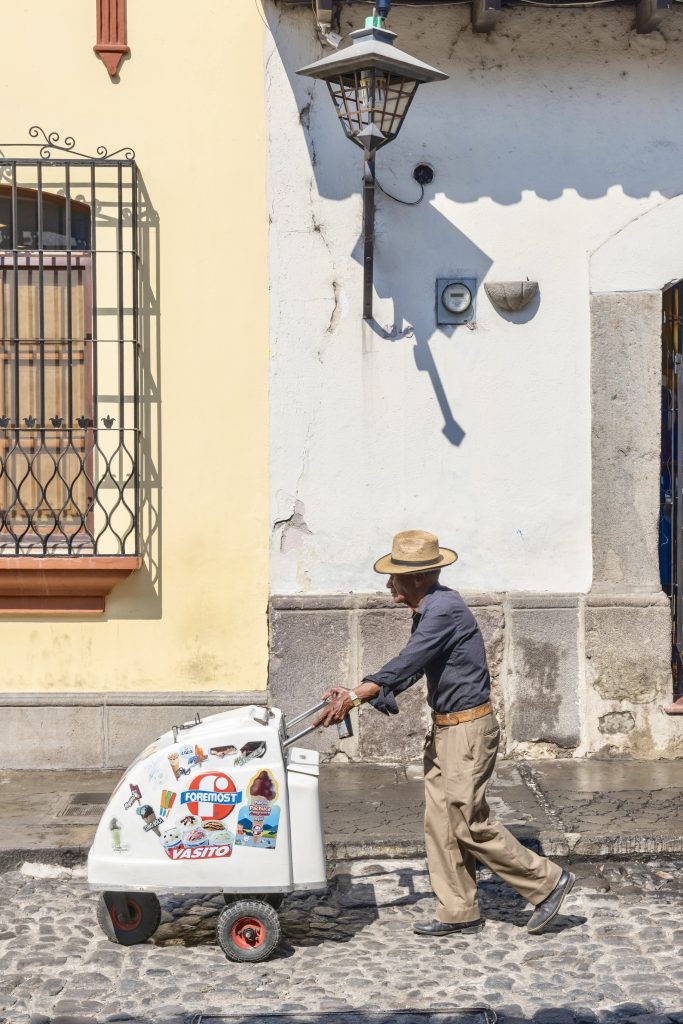
- Chupetes – Bright, oversized lollipops in fruity flavors, shaped like swirls or pacifiers. They’re a favorite with kids and a classic Holy Week street treat.
- Corbatas – Sweet, crunchy fried dough shaped like a bow tie and sprinkled with sugar. Light, crispy, and the perfect grab-and-go snack.
- Fresh Fruit Cups – From pineapple and watermelon to papaya and green mango topped with pepitoria, lime, salt, and chili, fresh fruit is sold in clear bags or plastic containers, ready to eat. They’re a cool, healthy break between all the sweets.
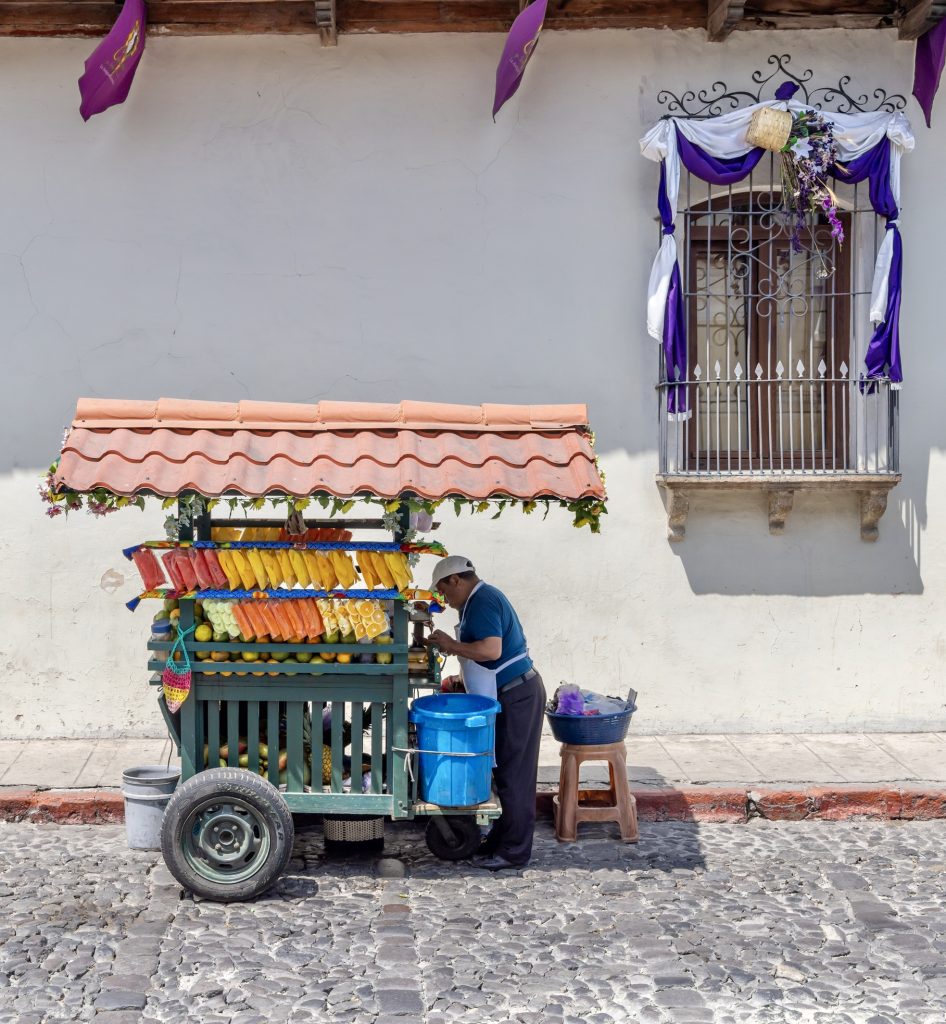
These street foods may not be part of centuries-old Holy Week tradition, but they’ve earned their spot in today’s Semana Santa in Antigua Guatemala. Especially for families, trying one (or a few) of these is part of the joy of walking the streets during this unforgettable time.
Traditional Guatemalan Drinks for Semana Santa
After hours under the sun walking the cobblestone streets of Antigua, there’s nothing like a cold, sweet drink to keep you going. During Semana Santa in Guatemala, you’ll see people sipping on colorful local refreshments sold in plastic bags with straws—or served in recycled cups by street vendors parked outside vigils and procession routes. These traditional Guatemalan Holy Week drinks are refreshing, hydrating, and deeply tied to the season.
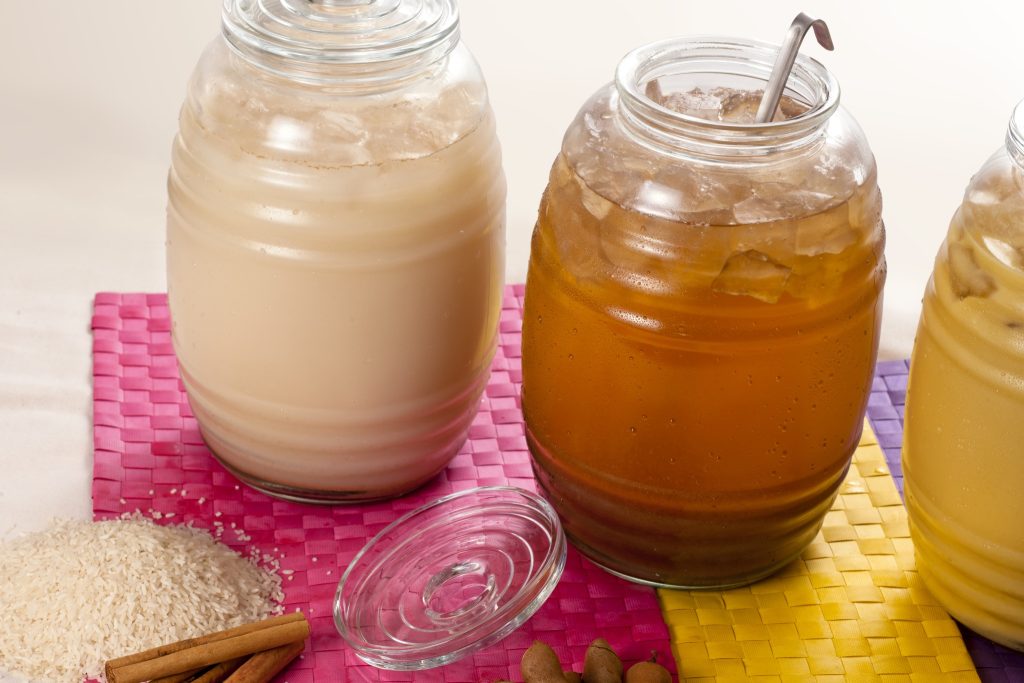
Salmonnegro | Dreamstime.com
Fresco de Chilacayote
Made with chilacayote (a type of squash) and simmered with spices and panela. It can be served warm as a dessert or cold as a sweet drink. You’ll see it often in plastic bags with straws during processions.
Rosa de Jamaica
Hibiscus flower tea, served cold with lots of sugar and ice. Bright red and tangy, this drink is both beautiful and thirst-quenching. It’s easy to find and always a good choice. Make it at home with this easy Rosa de Jamaica recipe.
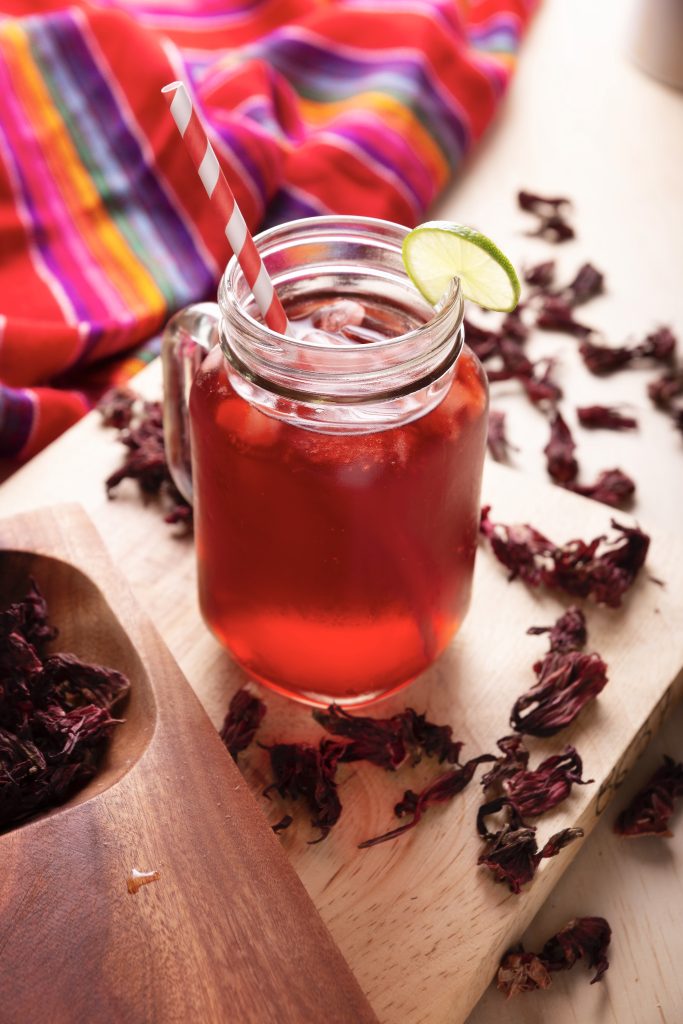
Fresco de Súchiles
This naturally fermented drink made with corn, pineapple, and panela is earthy and tangy. It’s less common than others but still part of the traditional lineup in more rural areas and sometimes in Antigua markets.
Horchata
A creamy drink made from rice, cinnamon, vanilla, and sugar. Though not exclusive to Semana Santa, it’s a favorite for processions and fairs—and pairs especially well with tamalitos de elote or buñuelos. Get the recipe for horchata here.

Some vendors also offer seasonal atoles (warm corn-based drinks), especially in the early mornings before the processions begin. If you’re feeling adventurous, try asking what’s del día—it’s part of the fun.
Where to Eat Traditional Guatemalan Semana Santa Foods in Antigua
If you’re visiting Antigua Guatemala during Semana Santa, you won’t have to look far to find incredible food—it’s literally everywhere. During processions and vigils, street vendors set up along the main routes and near churches like La Merced, San Francisco, and Escuela de Cristo. You’ll find everything from garbanzos en miel and empanadas de manjarto chilled fresco de chilacayote and warm tamalitos de elote wrapped in husks.
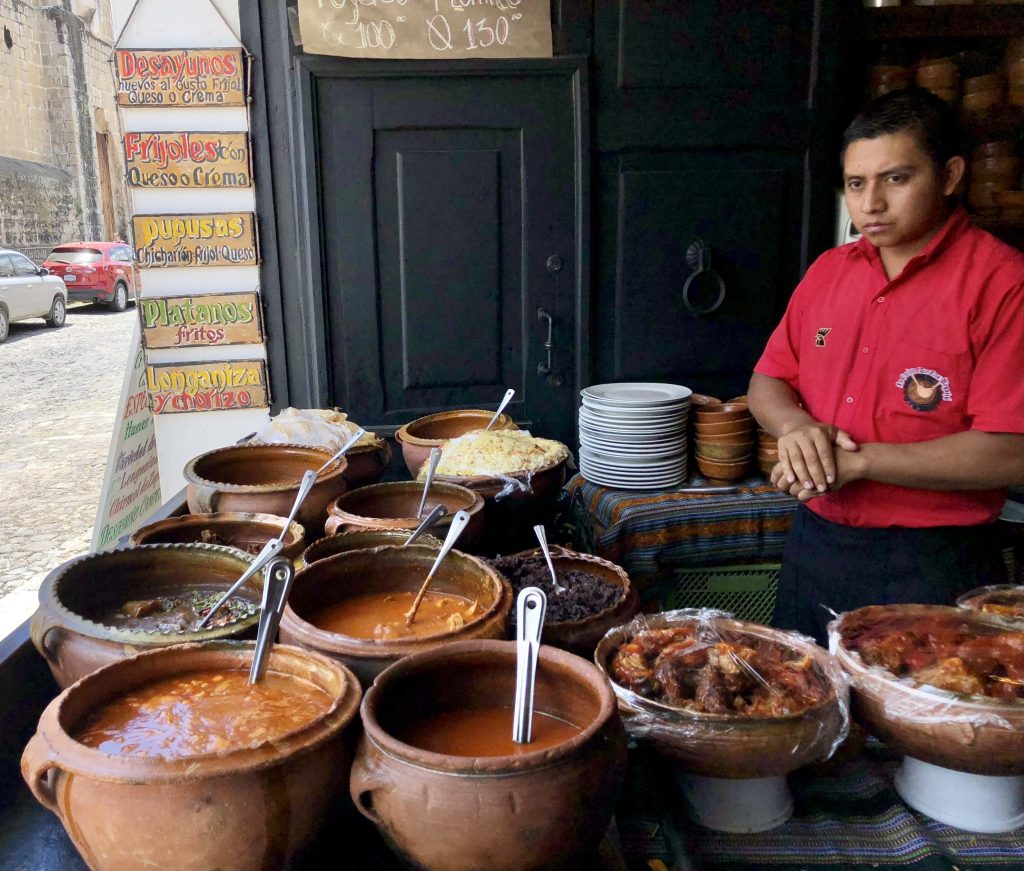
One spot I always recommend is La Cuevita de los Urquizú, a beloved local eatery where you can try a variety of traditional Guatemalan Holy Week foods. Their buffet-style setup lets you pick and choose from seasonal favorites like pescado seco, rellenos, and jocotes en miel—all in a casual setting that feels just like home. It’s also a great place if you’re curious about trying dishes beyond the typical tourist fare.
- Cranberry Brie Cake Grazing Board (An Elegant Holiday Cheese Centerpiece) - December 19, 2025
- Easy Cranberry Cocktails You Can Make All Year - December 18, 2025
- Christmas Mulled Wine (A Classic Holiday Mulled Wine Recipe) - December 18, 2025


